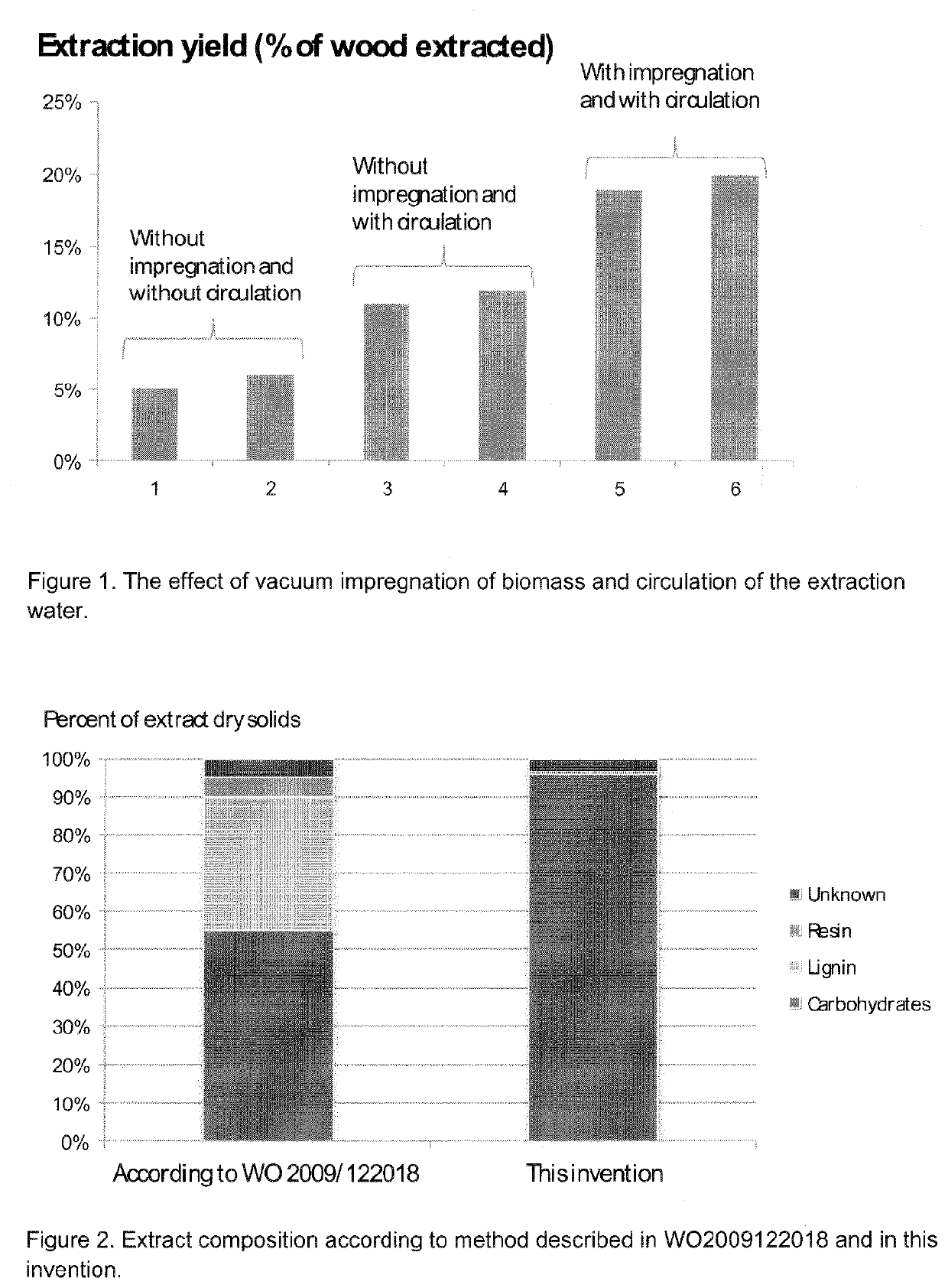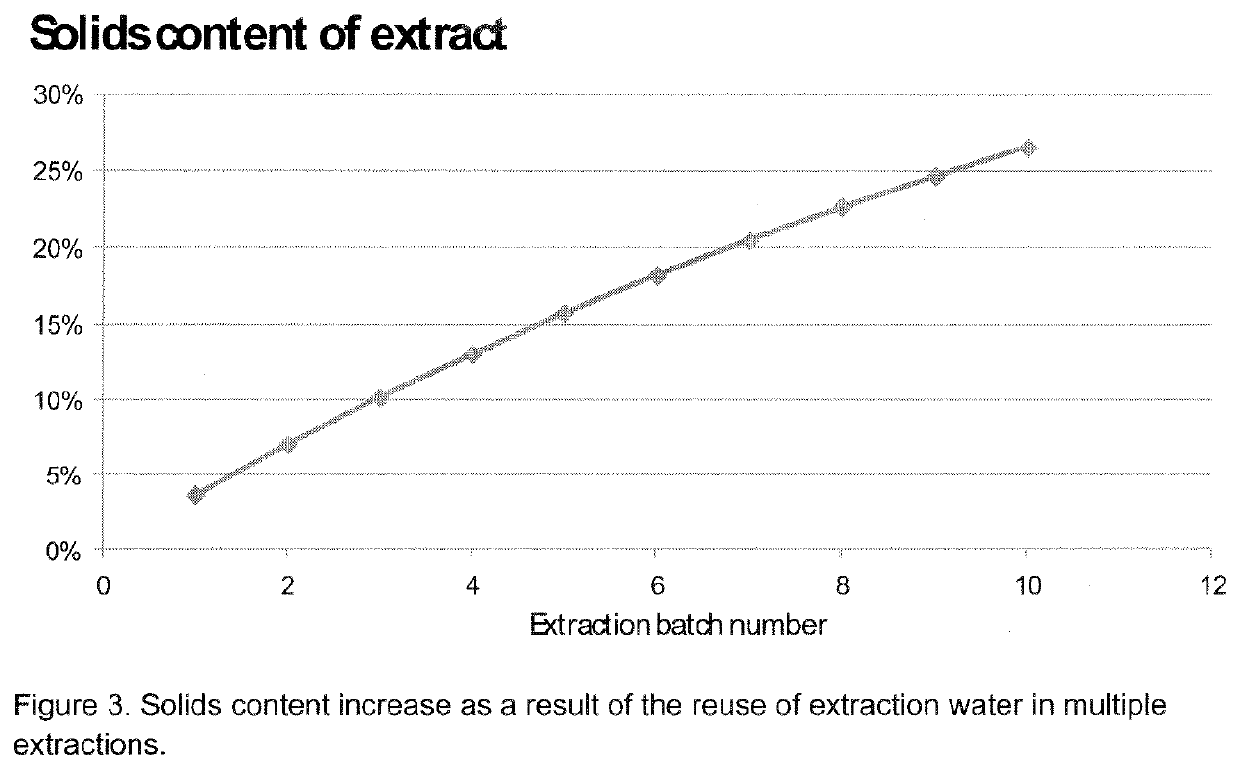Method for extracting biomass
a biomass and extraction method technology, applied in the field of biomass extraction method, can solve the problems of toxic compound formation, diluted extract, and extremely low solid content of extra
- Summary
- Abstract
- Description
- Claims
- Application Information
AI Technical Summary
Benefits of technology
Problems solved by technology
Method used
Image
Examples
examples
[0032]The effect of extract circulation and impregnation under reduced pressure (0.8 Bar under pressure) was investigated. The biomass was 200 grams (O.D.) of Scott spine chips (Pinus Sylvestris). The water to wood ration was 5:1. The extraction water was kept at 150° C. for two hours. In experiments with circulation, the extract had circulated 10 times through the biomass. The pH of the extract was measured every half hour. In experiments where the biomass was impregnated, hence most of the air and oxygen gas was removed from the reactor, no changes in pH could be noted. In experiments without impregnation under reduced pressure a significant pH drop, typically over one pH unit was recorded. This indicated that the formation of acids, especially through deacetylation of the biomass did not occur in the experiments with impregnation. The yield of the extractions is shown in FIG. 1. The extracts were analyzed by gas chromatography for carbohydrates (Sundberg A, Sundberg K, Lillandt C...
PUM
| Property | Measurement | Unit |
|---|---|---|
| pressure | aaaaa | aaaaa |
| temperature | aaaaa | aaaaa |
| temperature | aaaaa | aaaaa |
Abstract
Description
Claims
Application Information
 Login to View More
Login to View More - R&D
- Intellectual Property
- Life Sciences
- Materials
- Tech Scout
- Unparalleled Data Quality
- Higher Quality Content
- 60% Fewer Hallucinations
Browse by: Latest US Patents, China's latest patents, Technical Efficacy Thesaurus, Application Domain, Technology Topic, Popular Technical Reports.
© 2025 PatSnap. All rights reserved.Legal|Privacy policy|Modern Slavery Act Transparency Statement|Sitemap|About US| Contact US: help@patsnap.com


